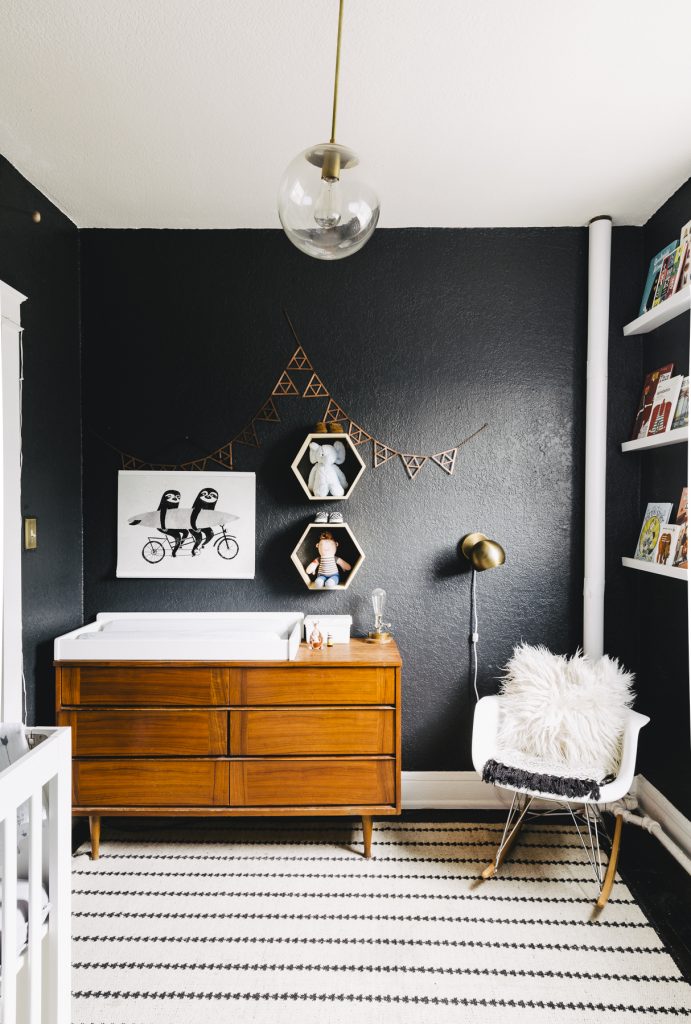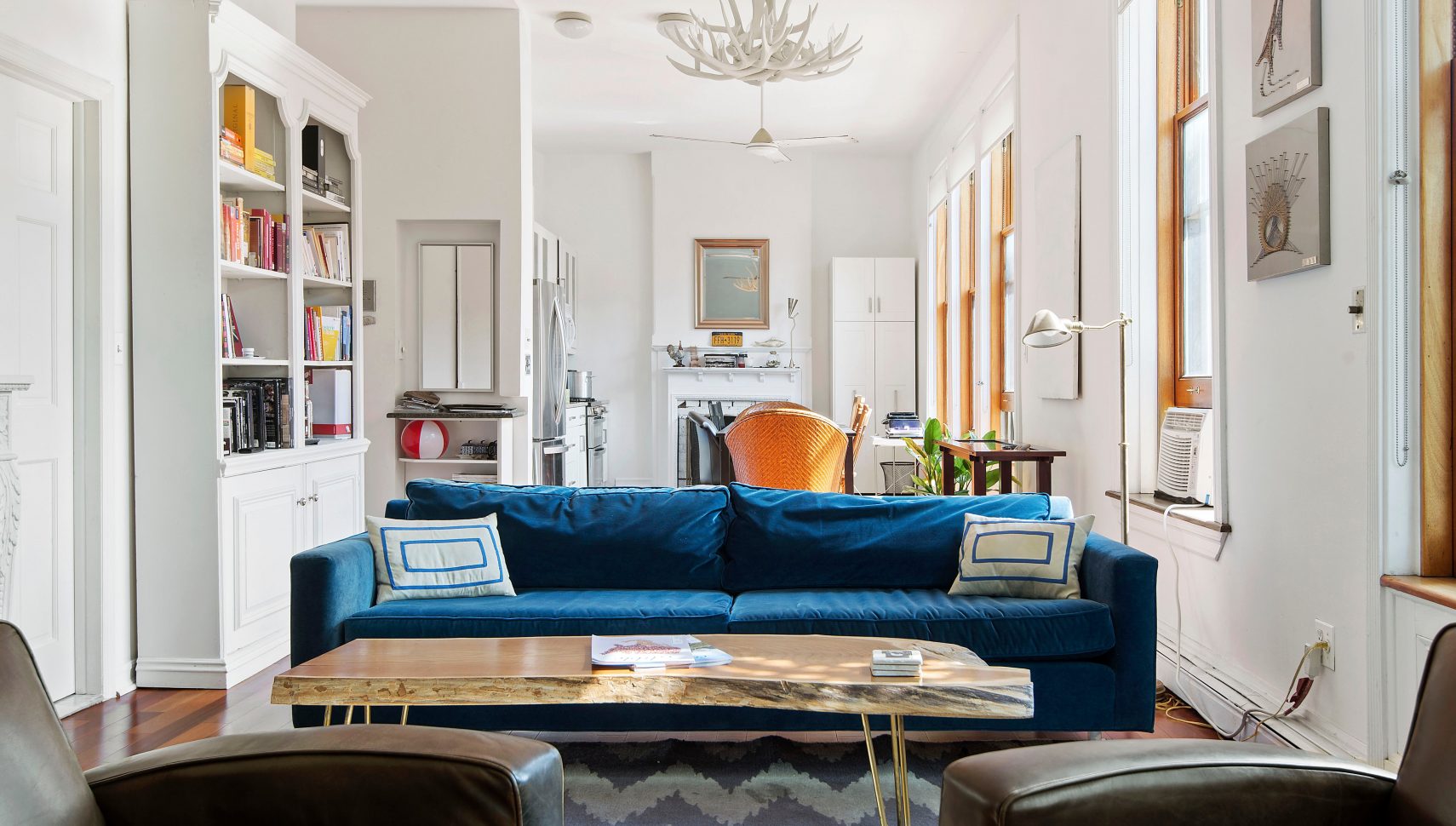It’s easy to choose pieces you love for your home. After all, most of us have pretty solid opinions about our own design styles. But that doesn’t make it easy to choose a layout for your space that is both beautiful and functional. While no room is the same, interior designers tend to use certain guidelines to make sure their spaces look polished. We’ve pulled together some of our best tips for making a room layout feel just right.
Consider Scale
One of the biggest design pitfalls is choosing furniture and accessories that just aren’t the right scale for a space. If you have a huge great room with vaulted ceilings, small pieces can get lost and look a little sad in the cavernous space. If you have a small studio, tons of heavy, dark furniture can make the space feel unpleasantly claustrophobic.
So, before purchasing pieces for your home, measure your space. While there aren’t any hard-and-fast rules, if you have a large area, feel free to shop bigger pieces. For smaller spaces, “apartment” sofas and multi-functional storage pieces are a great option.
Don’t forget to think about scale with your floors and walls too. Rugs can help define a conversational group, but make sure they are big enough to have about a foot underneath each anchoring piece (i.e. a sofa and two chairs), or a couple of feet of room around a piece like a bed or a dining table. Window treatments should extend all the way to the floor, and mounting hardware up close to the ceiling can help keep the space looking proportional. In other words, definitely don’t hang your curtains inside the window frame. It won’t look right.
Finally, scale considerations apply to art. For a large empty wall, you’ll want to fill the space with proportional art. Whether that’s a gallery wall comprised of a few smaller prints, or a big wall hanging that dramatically fills the space, don’t leave your walls looking empty. However, resist the temptation to go overboard with furniture and artwork. Too many pieces can feel cluttered. It’s better to be a little bit more minimalist then to try to cram a space full of furniture pieces.

Small furniture for a small space.
Take Stock of Your Assets
A key to good design is highlighting the good elements of your room while downplaying the less desirable features. So, take a look around and make a list of your favorite parts of the room. Are the windows big and south-facing, letting in tons of amazing light? Are the ceilings tall? Do you have gorgeous wood floors or period details like crown molding?
Use this list of amazing features as a guide for how to layout your room. To take advantage of great natural light, place seating near the windows that allows for reading and lounging in the sun. To highlight tall ceilings or other architectural details, use paint and wallpaper to provide contrast. If you have a great fireplace, position the seating around it, with the mantle as a focal point.
But, don’t be afraid to break those traditional design rules. Yes, you can place a bed against a window if that is where it fits best. Yes, you can even put a bed in the center of the room if you have enough space! No closets? Use wardrobes or hanging racks to provide the function you’ll need. Use a bench instead of a set of dining chairs, or consider hanging untraditional artwork on your walls. It all just needs to feel like your style, after all.
Let Function Inform Style
Along with your favorite features, be sure to consider the way the room is going to be used. If it’s a guest bedroom, remember that your guests will likely come with luggage in tow, and make sure there’s enough clearance around the furniture to wheel a suitcase. Provide a place to unpack, and consider what items a traveler might need to feel comfortable (for example, the WIFI password and extra toiletries are always good to have on hand).
Even for a more communal space, this exercise is important. For a dining room, will it be hosting formal parties or more casual game nights? Consider a modular arrangement of furniture in order to accommodate a wider range of uses– from game night to Thanksgiving dinner. For a living room, is it going to be home to the only TV? Or, will there be other areas for watching your favorite shows? Arrange your furniture so that you can see and hear whoever might be in the other seats. If pieces are too far away from each other, you might have trouble engaging with your family and friends in the space.
As a final touch, make sure you think about function for your lighting as well. Will the bedroom need bedside lamps, or are the other light sources enough? Does your sofa have enough light to see a newspaper, or is it dark in one corner? Address those deficiencies with spot lighting that makes it easier for you and your guests to use the space.
Test it Out
Don’t forget that nothing is perfect, especially on the first try. You can constantly make changes to help your space become more functional for yourself and your guests! Try things one way, but stay open to change. You might discover after a month or two that rearranging your furniture makes all the difference. Live with your decisions for a little while to make sure they truly work for you. Plus, staying open to change within your home means you’ll always have a new-room feeling, even if you’ve lived there for decades.
With these tips to consider, your space will be the envy of everyone who visits. With a little planning and testing, you can make your space work for you, instead of against you. But, if you still need help, don’t hesitate to ask our expert interior designers.

